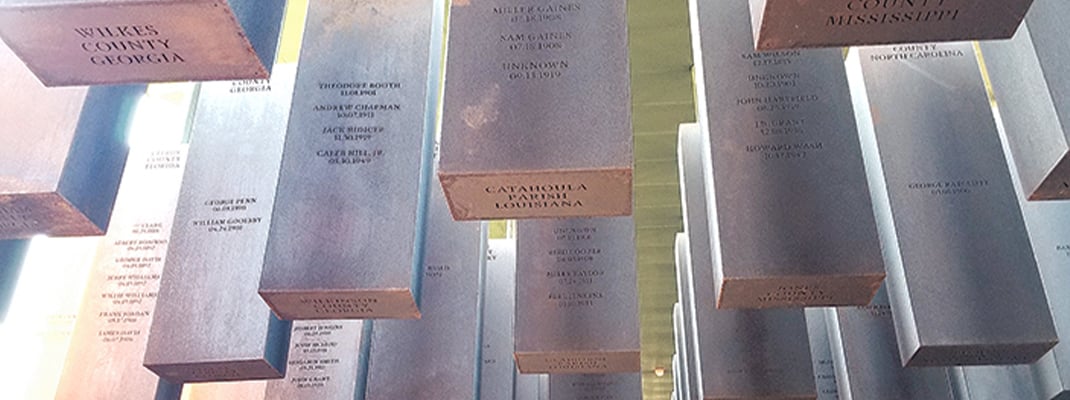Grateful for the ones who came before me
-
 Story and photo by Raquel Derganz Baker
Story and photo by Raquel Derganz Baker
"You are standing on the site where enslaved people were warehoused.” That is one of the first things you see when you enter the Legacy Museum in Montgomery, Alabama. That line will be forever burned in my mind.
I recently had the opportunity to join the Office of Black Catholic Ministries on a pilgrimage in honor of Black History Month. When I signed up to go, I had no idea that a weekend trip could change me so much.
On the first morning, we visited Dexter Avenue King Memorial Baptist Church. From the outside, it looks like any other small church, but when you step inside, you can feel the history that surrounds – history that includes life events of the iconic civil rights activist Dr. Martin Luther King Jr. He served there as pastor for several years with his wife, Coretta Scott King, who actively supported the church ministries.
One of my favorite parts of that church was being able to walk through his office. It was a surreal experience.
That afternoon, the day took a more somber turn as the group visited the National Memorial of Peace and Justice and the Legacy Museum. The memorial consisted of hundreds of large, rectangular pillars with the names of African-American lynching victims, the year they died, and the name of the state and county (or parish) in which they were killed.
As I was born and raised in the southern Mississippi, I found the reality of these brutal murders appalling and the close proximity unnerving.
In high school, I learned about slavery and how my ancestors were kidnapped from Africa and brought to the new world. But in all honesty, when I came to the counties and parishes that I recognized, I became sick to my stomach. It was devastating to see that place where I was born and the place I now call home were the sites of such terrible killings.
Later in the day at the Legacy Museum, pilgrims saw graphic photos and heard heartbreaking testimonies from victims. Many times, I had to pull myself away after watching videos describing the brutal and inhumane ways people were killed.
On our last night, we had what I consider a once-in-a-lifetime opportunity when we visited Resurrection Catholic Missions. Pilgrims got to listen to stories from people who lived and worked during the civil rights movement.
The activist panel consisted of people who knew Rosa Parks and Dr. King. Hearing these stories made the legendary figures seem more human.
We tend to think of civil rights leaders as “superheroes.” Now don’t get me wrong, they were giants, and I wouldn’t be able to write this column without the sacrifices they made. But what I learned is that they were normal, everyday people who took a stand against hate and injustice. That’s something we can all do and need to do.
In the end, this trip taught me two very important lessons. The first is to always be grateful for the ones who came before me. The second is that if we stand together, work together and speak out together, we can bring about positive change in our world, peacefully.
“If we have the courage and tenacity of our forebears, who stood firmly like a rock against the lash of slavery, we shall find a way to do for our day what they did for theirs.” – Mary McLeod Bethune.
Raquel Derganz Baker is a digital content specialist for the archdiocesan Office of Communications. She can be reached at rderganz [email protected].
